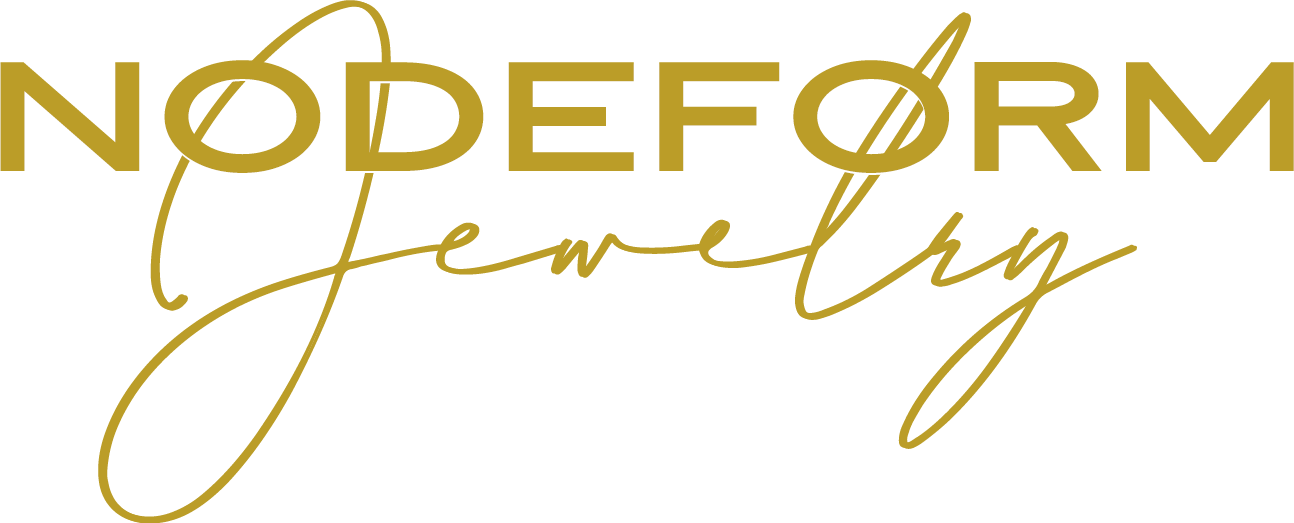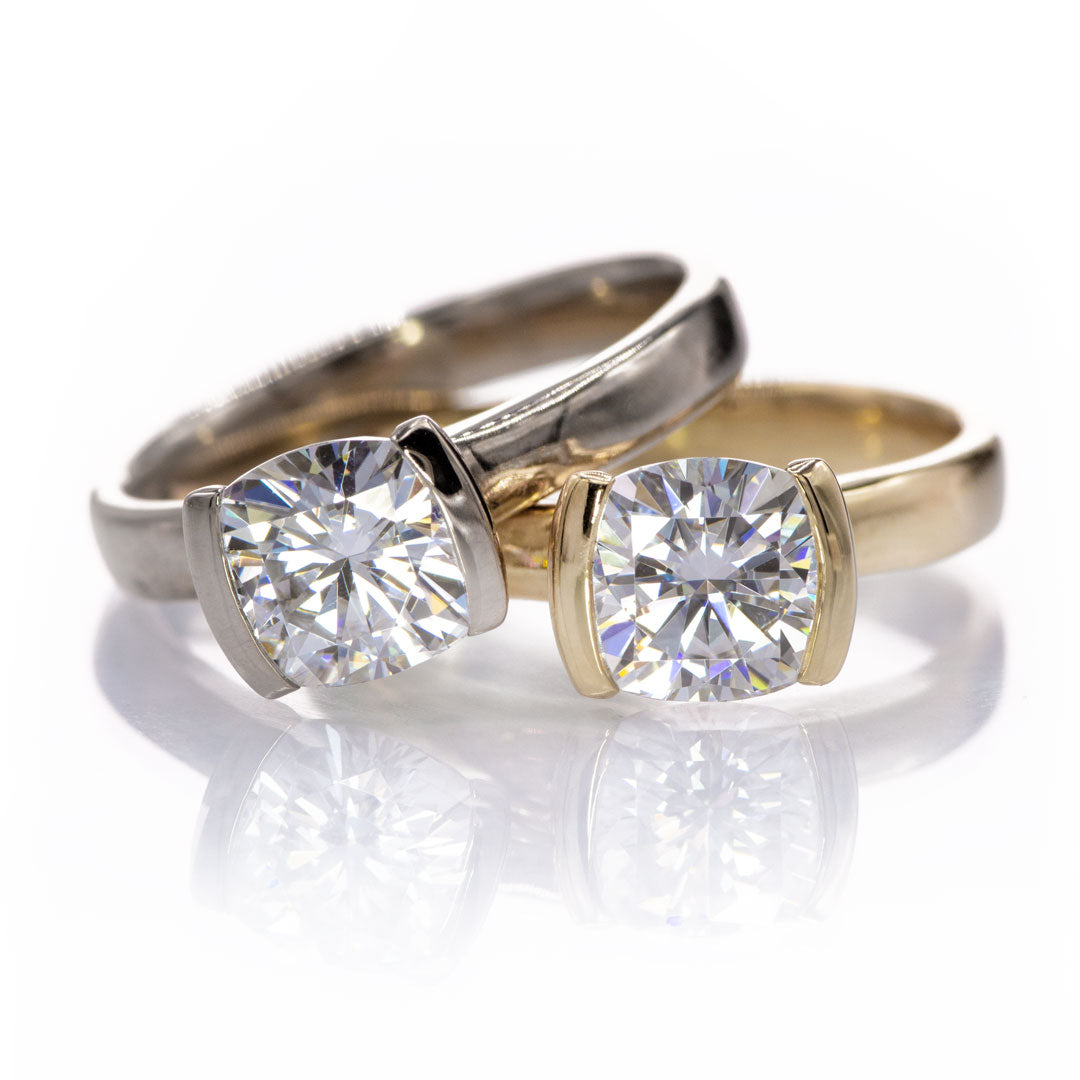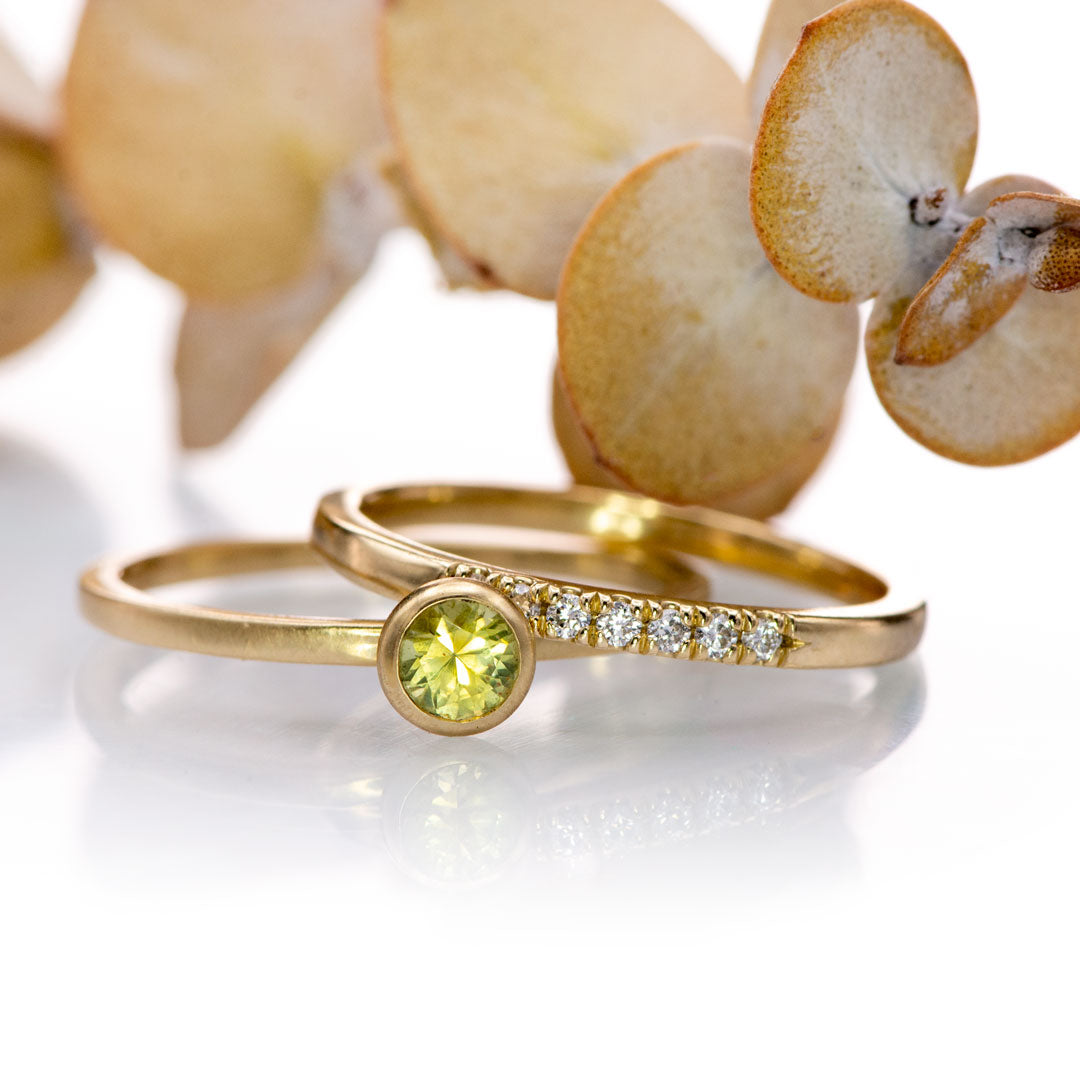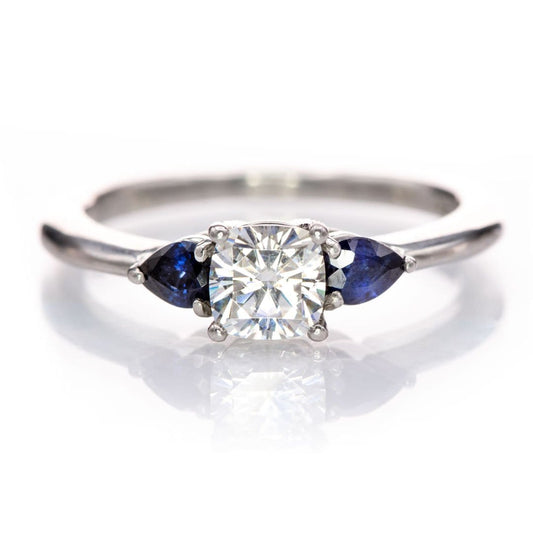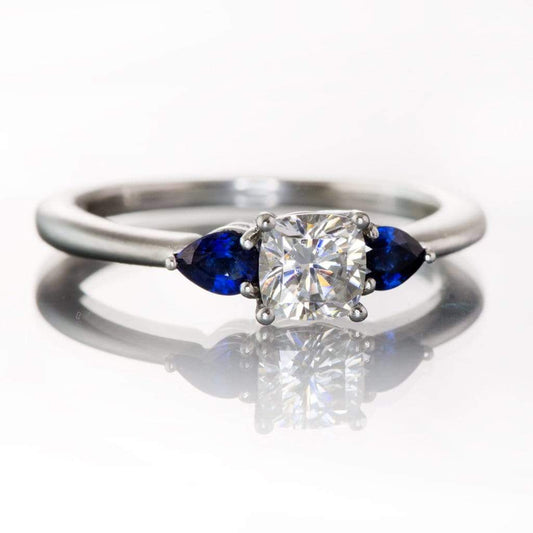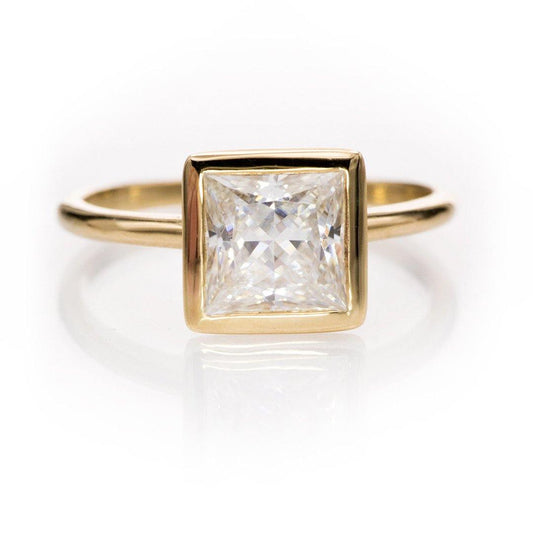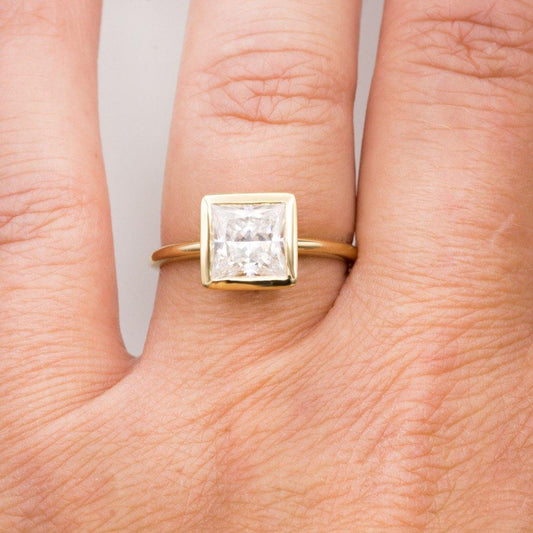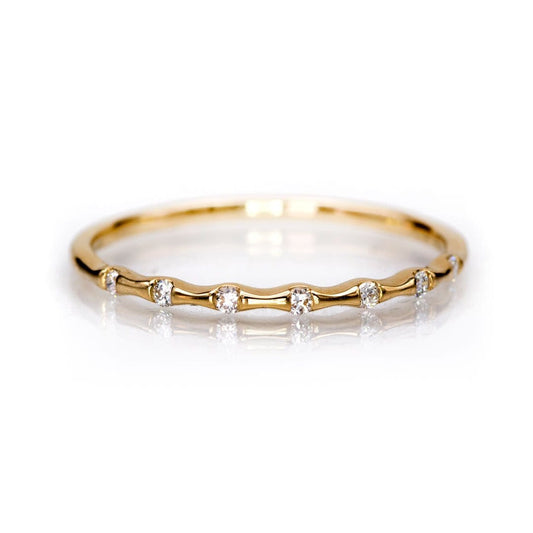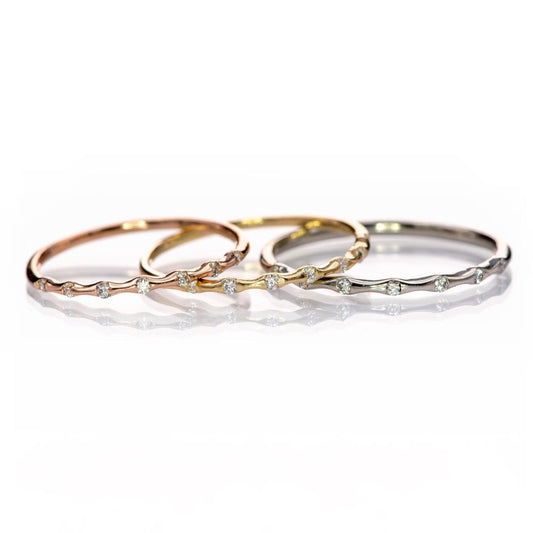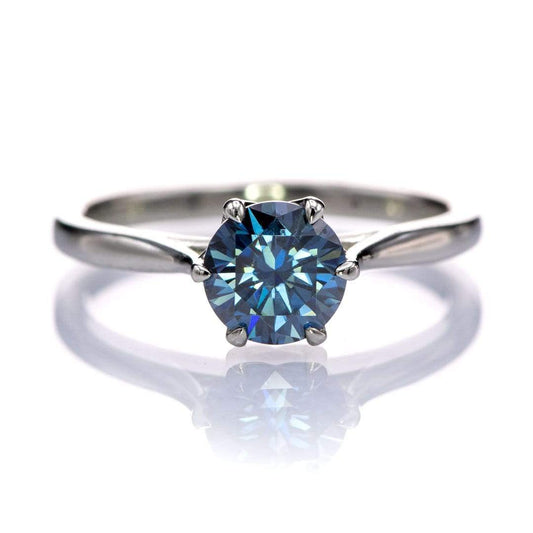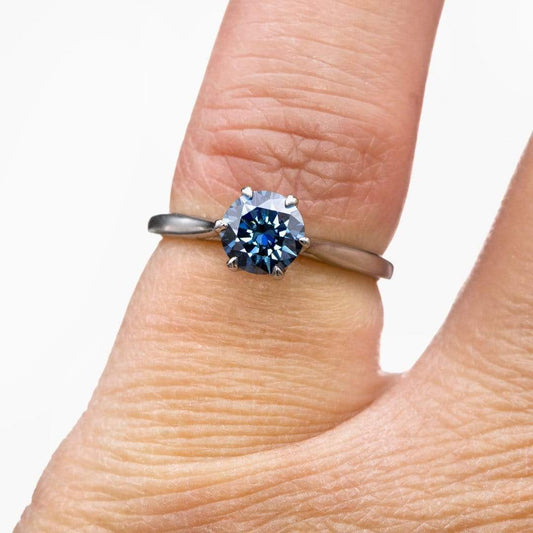Magnification Tools
Share
Amazing how my eye wear in the studio changed over the years. I used to do everything with just some safety glasses on, no magnification needed. Stones were big, settings easy.
The more intricate my work got, the more I needed magnification. My eyes are actually still excellent and I don't need glasses or contacts for everyday normal tasks. But stone settings will turn out so much better with the right magnification.
I really started adding magnification to my tools after taking a stone setting class last February. Before that I mostly used just safety glasses for grinding and polishing work and my Optivisors with different magnification lenses for stone setting. But I got the feel that I needed more enlargement to really see whats going on with my setting. Nothing worst than having just finished ring, just to realize when taking photos that the setting is not perfect. Taking photos of ones handmade jewlery can be a real eye opener. It shows every little flaw the normal eye view can't even pick up.
I was hoping I would just get used to using a hand held loupe with 10x magnification for stone setting. That's what's taught during Blaine Lewis Comprehensive Stone Setting class at New Approach School, a highly recommended class for anyone wanting to get better at stone setting.
But I really needed my hands free to do the actual stone setting. Using a loupe felt bothersome. Most of the magnification tools like glasses, bifocals and the likes only give a 2x to 3.5x magnification. Not bad, but not great either when dealing with stones less than 5mm dimensions, especially with fancy cuts.
Then I watched Blaine Lewis do his class tutorials with a microscope with super magnification shown to his students on big monitors. All I wanted at this point was a microscope. So back from class I took the plunge and got a highly recommended Meiji one to test. After playing with it for a a couple days I was hooked. Such a game changer when at once you can see things at a 7x to 45x magnification.
All over sudden one can see the tiny movements the metal of heavy bezel walls makes when hitting it with a setting hammer. Flush setting small 1mm diamonds is a breeze with the right magnification. I even felt compelled to try pave settings just because I could actually see what I was doing. One can really see if a stone setting is really closed safely over the stone's girdle. This means fewer lost stones, less stone breakage during setting, quicker finished stone setting tasks. Plus more beautiful settings equals better photos and more sales in the end.
A microscope is a huge investment but I think it's money well spend. I had to also add an adjustable bracket for my bench mate to bring down the ring clamp. This keeps the right distance to the microscope and a comfortable sitting and ergonomic head position. Getting used to working with a microscope was pretty easy. I think it also improved my posture at the bench, greatly reducing any occasional back problems.
I recently added a second cheaper microscope at my wax bench. Haven't really tried it out much yet. It feels a bit more awkward to use at first, but it should get better once I figure out the right setup. I was using the one at the metal bench more and more when carving waxes and it seemed to make stone setting a lot quicker after casting. So having one at the wax bench should save more time as I don't have to move around so much. Also got an extra LED light for the Meiji from AM Scope since it was a lot cheaper than the one offered through Otto Frei or Rio . It's a lot nicer now with this adjustable ring light.
I still use my Optivisor with #5 (x2.5) and #10 (x3.5) lenses for some tasks like polishing and grinding. They work pretty good but I sometimes hate the head band thingy. Leaves me with a bad hair do after a full work day and a sweaty and dirty forehead especially in hot summer months. But they work apparently great for people who wear glasses to correct other eyesight issues and just need to add some magnification.
A couple cheap +2.5 drugstore readers come in handy too for those tasks only needing some safety glasses with minor magnification like general work with the Foredom flexshaft tools and soldering. I keep misplacing these readers, so fancy frame colors help finding them easier in my mess. I wish they would make some with glow in the dark frames for easy locating at the end of the work day.
I also have some Eschenbach glasses that I can't get used to working with. The field of vision is smaller than with the Optivisor. The 2X magnification isn't really worth it and the 16 inches working distance is too far away for me for jewelery work. Each lens has a dial that allows for adjustments and for a change in focal length, which is great but still not really useful for me. They do work great if reading a book or working on a laptop where the working distance is more constant. But I don't really need magnification for those things yet. Maybe I use them more in a couple years when my eyesight takes a plunge.
I still use some plain safety glasses at the polishing machine, dark glasses for casting and dark welding glasses for palladium soldering. All those don't have magnification.
Finding the right magnification tools can be tricky for some jewelers who have to deal with certain eye sight issues like astigmatism or nearsightedness. Testing out a lot of those really helps finding the one that feels comfortable.
The more intricate my work got, the more I needed magnification. My eyes are actually still excellent and I don't need glasses or contacts for everyday normal tasks. But stone settings will turn out so much better with the right magnification.
I really started adding magnification to my tools after taking a stone setting class last February. Before that I mostly used just safety glasses for grinding and polishing work and my Optivisors with different magnification lenses for stone setting. But I got the feel that I needed more enlargement to really see whats going on with my setting. Nothing worst than having just finished ring, just to realize when taking photos that the setting is not perfect. Taking photos of ones handmade jewlery can be a real eye opener. It shows every little flaw the normal eye view can't even pick up.
I was hoping I would just get used to using a hand held loupe with 10x magnification for stone setting. That's what's taught during Blaine Lewis Comprehensive Stone Setting class at New Approach School, a highly recommended class for anyone wanting to get better at stone setting.
But I really needed my hands free to do the actual stone setting. Using a loupe felt bothersome. Most of the magnification tools like glasses, bifocals and the likes only give a 2x to 3.5x magnification. Not bad, but not great either when dealing with stones less than 5mm dimensions, especially with fancy cuts.
Then I watched Blaine Lewis do his class tutorials with a microscope with super magnification shown to his students on big monitors. All I wanted at this point was a microscope. So back from class I took the plunge and got a highly recommended Meiji one to test. After playing with it for a a couple days I was hooked. Such a game changer when at once you can see things at a 7x to 45x magnification.
 |
| Meiji Microscope at metal working bench. Yes, my bench is always messy. |
All over sudden one can see the tiny movements the metal of heavy bezel walls makes when hitting it with a setting hammer. Flush setting small 1mm diamonds is a breeze with the right magnification. I even felt compelled to try pave settings just because I could actually see what I was doing. One can really see if a stone setting is really closed safely over the stone's girdle. This means fewer lost stones, less stone breakage during setting, quicker finished stone setting tasks. Plus more beautiful settings equals better photos and more sales in the end.
A microscope is a huge investment but I think it's money well spend. I had to also add an adjustable bracket for my bench mate to bring down the ring clamp. This keeps the right distance to the microscope and a comfortable sitting and ergonomic head position. Getting used to working with a microscope was pretty easy. I think it also improved my posture at the bench, greatly reducing any occasional back problems.
I recently added a second cheaper microscope at my wax bench. Haven't really tried it out much yet. It feels a bit more awkward to use at first, but it should get better once I figure out the right setup. I was using the one at the metal bench more and more when carving waxes and it seemed to make stone setting a lot quicker after casting. So having one at the wax bench should save more time as I don't have to move around so much. Also got an extra LED light for the Meiji from AM Scope since it was a lot cheaper than the one offered through Otto Frei or Rio . It's a lot nicer now with this adjustable ring light.
I still use my Optivisor with #5 (x2.5) and #10 (x3.5) lenses for some tasks like polishing and grinding. They work pretty good but I sometimes hate the head band thingy. Leaves me with a bad hair do after a full work day and a sweaty and dirty forehead especially in hot summer months. But they work apparently great for people who wear glasses to correct other eyesight issues and just need to add some magnification.
| Wax working microscope, Optivisor, 2.5x readers, safety glasses for casting and welding. |
A couple cheap +2.5 drugstore readers come in handy too for those tasks only needing some safety glasses with minor magnification like general work with the Foredom flexshaft tools and soldering. I keep misplacing these readers, so fancy frame colors help finding them easier in my mess. I wish they would make some with glow in the dark frames for easy locating at the end of the work day.
I also have some Eschenbach glasses that I can't get used to working with. The field of vision is smaller than with the Optivisor. The 2X magnification isn't really worth it and the 16 inches working distance is too far away for me for jewelery work. Each lens has a dial that allows for adjustments and for a change in focal length, which is great but still not really useful for me. They do work great if reading a book or working on a laptop where the working distance is more constant. But I don't really need magnification for those things yet. Maybe I use them more in a couple years when my eyesight takes a plunge.
I still use some plain safety glasses at the polishing machine, dark glasses for casting and dark welding glasses for palladium soldering. All those don't have magnification.
Finding the right magnification tools can be tricky for some jewelers who have to deal with certain eye sight issues like astigmatism or nearsightedness. Testing out a lot of those really helps finding the one that feels comfortable.
